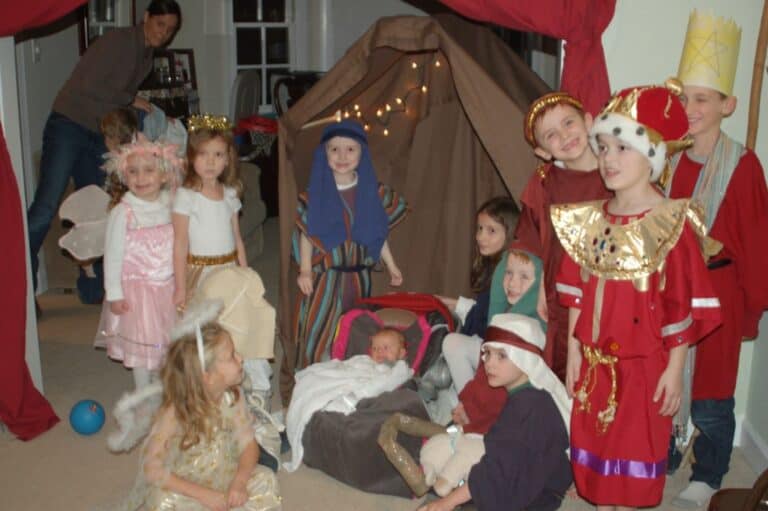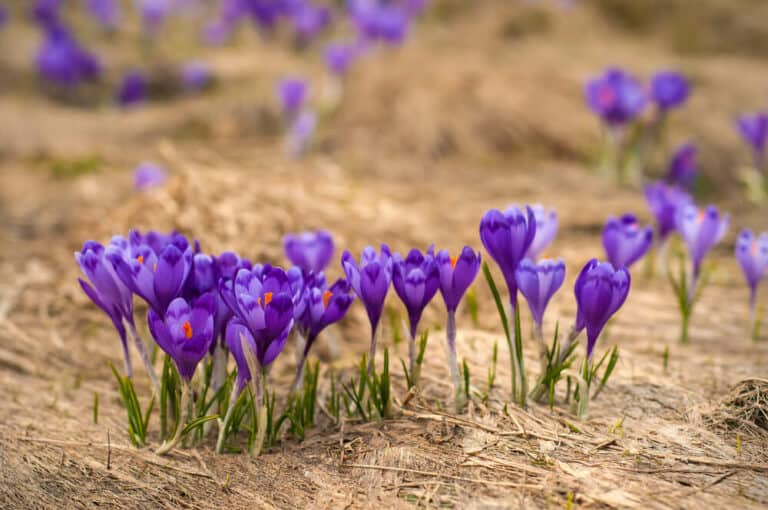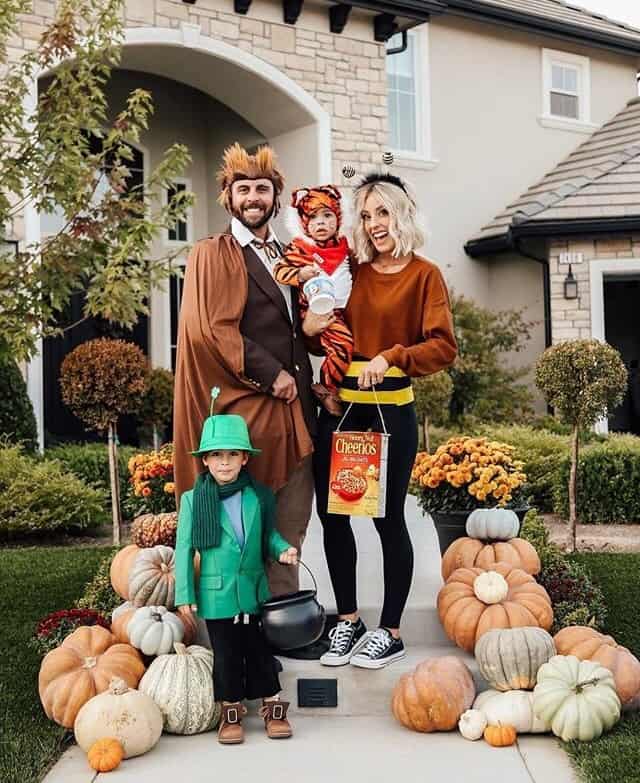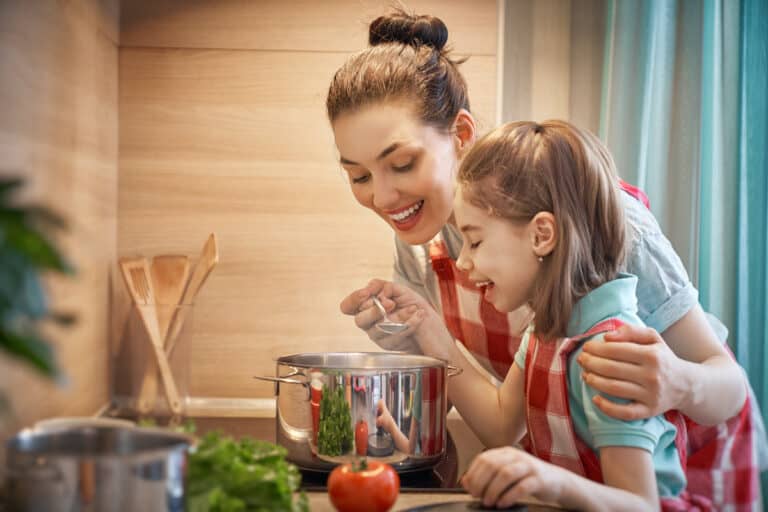What Is Diwali, the Festival of Lights?

Diwali is one of the major religious festivals in Hinduism, Jainism, and Sikhism. Read all about this exciting and beautiful holiday with rich cultural traditions.
What Is Diwali?
Diwali begins on the 13th day of the dark half of the lunar month Ashvina and ends on the second day of the light half of the lunar month Karttika– 5 days total. The name comes from the Sanskrit word dipavali, which means “row of lights.” It celebrates the symbolic triumph of light over dark. This year, Diwali begins Monday, October 24, 2022.
Diwali celebrations and observances are different depending on regional traditions. Among Hindus, diyas (small oil-filled lamps) are lit on the night of the new moon to invite the presence of Lakshmi, the goddess of wealth and prosperity.
In Bengal, Hindus celebrate the goddess of time, doomsday, and death, Kali.
In North India, Diwali also celebrates Rama’s return home after successfully defeating Ravana, the ten-headed king of demons.
In South India, the festival marks Krishna’s defeat of the demon Narakasura. Some celebrate Diwali to commemorate the marriage of Lakshmi and Vishnu, while others celebrate it as Lakshmi’s birthday.
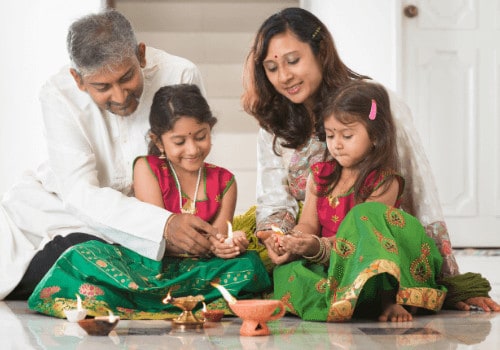
How Do Hindus Celebrate Diwali?
While people celebrate Diwali for many different reasons, they also generally have different celebrations for each of the five days.
Day 1: Known as Dhanteras, on this day people will clean their houses, buy small gold items, and worship Lakshmi.
Day 2: Called Choti Diwali or Naraka Chaturdashi, this day commemorates Krishna destroying Narakasura. Individuals also offer prayers for their ancestors’ souls.
Day 3: This is the most important day of the festival. Called Lakshmi Puja, families ask for Lakshmi’s blessings for their well-being and prosperity. They also light diyas, visit temples, and set off fireworks.
Day 4: Known as Goverdhan Puja (also Balipratipada, or Annakut), day 4 commemorates Krishna’s defeat of the king of the gods, Indra. It’s also the first day of Karttika and the beginning of the Hindu new year. On this day, spouses often celebrate their bond.
Day 5: Called Bhai Dooj, Bhai Bij, or Bhai Tika, this day is for celebrating the bond between sisters and brothers.
Diwali is a time to visit friends and family, exchange gifts, feast, feed the poor, wear new clothes, and set off fireworks. Celebrations also include gambling (especially card games) to bring good fortune in the new year.
Diwali for Other Religions
Those who practice Jainism also celebrate Diwali. The festival celebrates the liberation (moksha) of Mahavira from the cycle of life and death (samsara). Jains light lamps to represent the light of Mahavira’s holy enlightenment.
Since the 18th century, the Sikhs celebrate Diwali to commemorate Guru Hargobind’s return to Amritsar from his captivity in Gwalior. In celebration, residents light lamps all around the city.
Some Buddhists celebrate Diwali, although it’s not one of their primary religious festivals. For them, it’s the remembrance of the day in the 3rd century BCE when Emperor Ashoka converted to Buddhism. Celebrations include lighting lamps, decorating temples and monasteries, and worshipping the Buddha.
Diwali Sweets
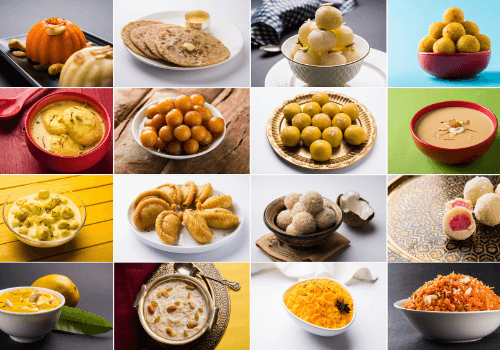
People usually celebrate the second day by buying and sharing sweets. On this day, many people visit friends and relatives, sharing sweets as gifts. If they can’t visit, some send cards and attach a box of sweets.
Indian sweets, or ‘mithai’, are a little different from candies and desserts typical to the United States. Many use nuts or vegetables as a base, condensed down with sugar and sometimes milk.
Ideas for Diwali Sweets
Finger-food
Rava Laddu (or laddoo): A South Indian sweet made with semolina, sugar, ghee, cashews, and raisins, shaped into small balls. You can also add ingredients such as chopped nuts and/or dried raisins.
Barfi (or burfi): Made with a base of condensed milk solids, sugar, and ghee. The most common ingredients added to the base include nuts usually pistachios, cashews, and peanuts. However, additions may include fruits, saffron, rose water, gram flour, or almonds, depending on the region.
The additional ingredients affect the final appearance, consistency, and color of each type. When cooled, the sweet-maker may cut it into diamonds, circles, or squares. All regions throughout the country eat this confection, but it’s especially popular in northern India.
Peda: Peda (or pera): A popular sweet made with milk, sugar, and flavorings like cardamom or saffron. Traditionally the sweet-maker creates peda by simmering milk for a long time to get the evaporated milk solids known as khova, then sweeten and flavor them.
Kaju Katli: Prepared with cashews soaked in water (usually overnight), then ground to a paste. A sugar solution is boiled down then added to the ground cashews. Ghee, saffron, and dried fruits can also be added. With the paste spread and flattened in a shallow dish, it’s then cut into diamond-shaped pieces and decorated with edible silver foil.
Halwa: Halwa (sometimes spelled Halva) is a dense, sweet confection. In India, halva recipes use semolina flour, melted butter or ghee, sugar or honey, and sometimes acacia gum. It comes in different colors and can be translucent. Halwa can have raisins, cashews, pistachios, almonds, etc. Many enjoy this vegetable-based version with carrots called Gajar ka halwa.
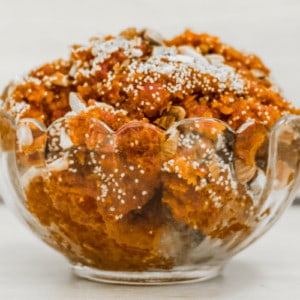
Carrot Halwa
Ingredients
- 8-9 medium, tender, juicy carrots approximately 4 to 4.5 cups grated
- 4 cups full-fat milk
- 4 tbsp ghee
- 10-12 tbsp granulated sugar- organic unrefined cane sugar is best
- 5-6 green cardamom pods powdered finely in a mortar-pestle or about ⅓ to 1 teaspoon cardamom powder
- 10-12 whole cashews chopped
- 10-12 almonds- sliced or chopped
- 2 tbsp golden raisins
- 1 pinch salt
Instructions
- Rinse, peel, and grate the carrots with a hand held grater or in a food processor.
- In a deep pan, combine milk and grated carrots.
- On a low to medium heat, bring the whole mixture to a boil and then simmer.
- While the mixture is simmering low, keep stirring. The grated carrots will cook in the milk and the milk will start to reduce and evaporate.
- When the milk has 75% reduced, add the ghee, sugar, and cardamom to the mixture. Stir well and continue to simmer and cook on a low flame.
- Towards the end, add the cashews, almonds, saffron, and raisins. Simmer the halwa till all the milk is evaporated. Switch off the burner.
- Serve gajar halwa hot, warm, or cold. Garnish with some chopped dried fruits.
Nutrition
More Sweet Dishes
Rasmalai: A Bengali delicacy very popular with those who love sweets –made with milk, an acidic ingredient, sugar, and saffron. Rasmalai literally translates to “juice” and “cream.” It has flattened spheres of chhana (cheese curds) soaked in clotted cream and flavored with cardamom.
Gulab jamun: Gulab jamun (also spelled gulaab jamun) is a milk-solid-based sweet. They’re small, berry-shaped spheres soaked in rose-flavored sugar syrup.
Kheer: A type of pudding made by boiling milk, sugar, and rice. It can be flavored with cardamom, nuts & rose water.
Rasgulla (also Roshogolla, or Rasagola: A syrupy dessert made from ball-shaped dumplings of chhena and semolina dough, cooked in a light sugar syrup that permeates the dumplings.
Diwali, the Festival of Lights!
Doesn’t it sound like a beautiful and exciting holiday? We love all the festive celebrations, and of course, the sweets! Want to celebrate Diwali with your family? Try one of these delicious recipe ideas and share the results with your family and friends on FamilyApp! They may be excited to learn something new! If your family has always celebrated the holiday, we wish you a very happy Diwali and all the best in the new year!


